Violet "Olesya": a description of the variety and tips for care

Houseplants are presented in a wide variety today. Among this list, violet (Saintpaulia), which has many species and varieties, remains quite in demand. Violet "Olesya" refers to crops that are valued by flower growers for their high decorative qualities, in light of which they are actively grown all over the world.
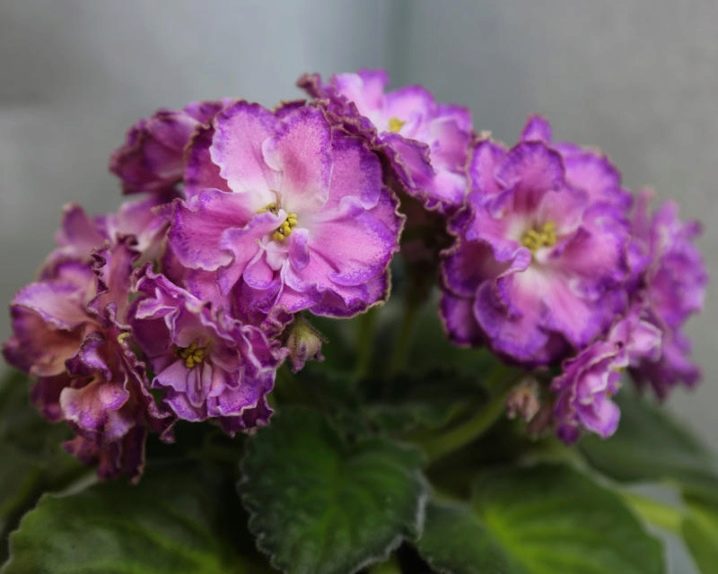
Peculiarities
The indoor flower, which bears the common name for everyone, the violet, belongs to the genus of flowering herbaceous plants - Saintpaulia, and has a second name used in floriculture - the uzambar violet. Today, for fans of this culture, breeders offer a wide range of species and hybrids of such a plant, the main difference between which is the size and color of the flowers. Violet "Olesya" is quite popular among flower growers, its demand is due to unpretentious care, as well as lush and rich flowering.
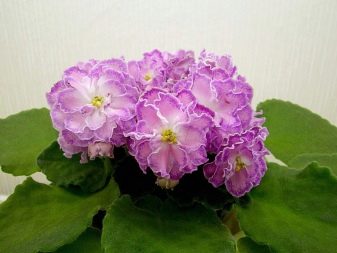
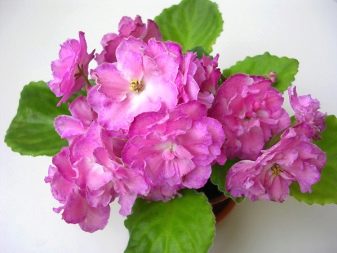

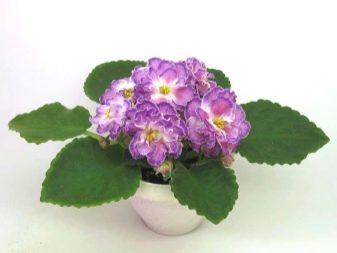
A feature of the culture is a dense rosette with purple-pink buds, an attractive color which is complemented by a border along the edge of the petals of a maroon shade. The bright color of the flowers becomes more delicate towards the middle, forming a creamy core. As a rule, the flowers of this variety of violets do not stand out for their large size, but the flowering continues for quite a long time. During flowering "SM-Olesya" exudes an unobtrusive and very pleasant aroma.
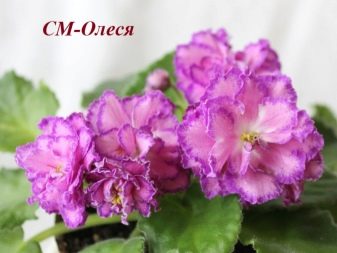
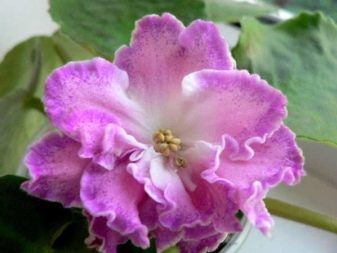
Breeder Morev is the "parent" of this indoor crop variety. Thanks to his work, florists and flower growers around the world were able to cultivate such a plant on their own. According to the description of the variety, a number of characteristics can be distinguished among the distinctive features of the Olesya violet.
- Notable for this plant is a dense rosette of leaves, which becomes even more expressive in the flowering phase.
- The result of the breeder's work was the breeding of a new variety, whose double or semi-double flowers stand out for their high decorative qualities, even if they are small in size.
- Leaf plates of violets "Olesya" have a small fluff on the surface, which has a positive effect on the appearance of the whole plant.
- A culture in the process of its growth and development can change the shade of its flowers. At the same time, the flowering density increases.
- "Olesya" blooms without reference to the season. As a rule, the interval between the dormant and flowering phases is on the order of two to three months. However, when creating an optimally suitable indoor microclimate, the culture can bloom almost without interruption.

Conditions of detention
Violet for active development and flowering at home requires certain conditions. The main ones are discussed below.
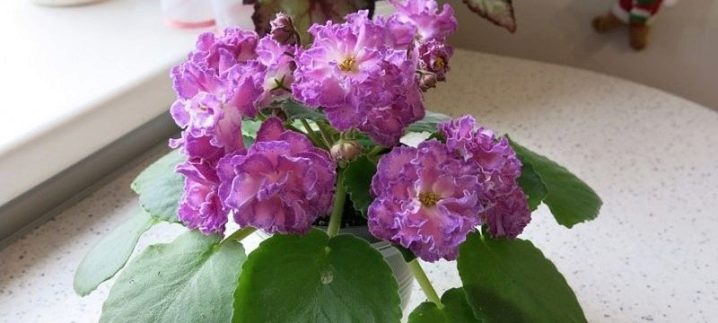
Lighting
All Saintpaulias, including the "Olesya" variety, are light-loving crops, but you should refrain from placing them in places where direct sunlight will fall on the plant, especially in summer. This is due to a rather delicate green mass, which can get burns from ultraviolet radiation. Shaded areas on the windowsill will be an excellent option for growing violets at home.
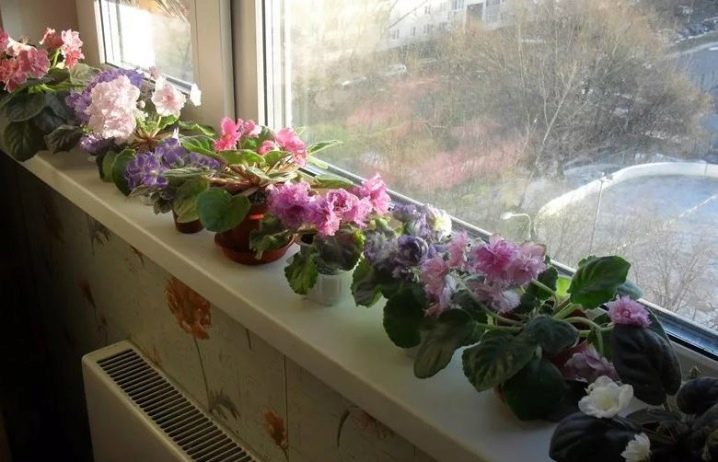
Special attention should be paid to the level of illumination of the culture in the winter months, which are distinguished by short daylight hours. For the "Olesya" variety during this period it is recommended to provide additional lighting. For these purposes, you can use special phytolamps.
Temperature and humidity
The violet grows well in rooms where the air temperature is in the range of + 22.24 ° C. These values will be most suitable for mature and mature Saintpaulias. For young crops, it is recommended to keep the room temperature within + 24.26 ° C. An important point for violets is the level of air humidity. For adult crops, it can be 50-60%; for growing Saintpaulia babies, you should take care of creating small greenhouses in which the air humidity level will be slightly higher. In apartments and houses, especially during the heating season, when the air humidity is extremely low, it is worth increasing it by regularly spraying violets with warm water. However, the ingress of moisture on the flowers of the culture should be avoided so as not to provoke their premature wilting.

Correct placement
When choosing a place for growing the "Olesya" variety, it would be more correct to give preference to the window sills located on the eastern side of the house. If the choice fell on windows facing south, during the summer months, violets should be provided with additional shading.
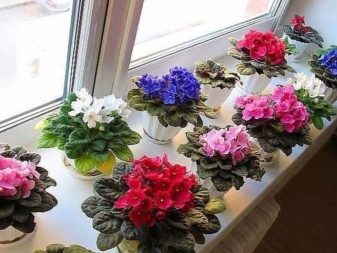
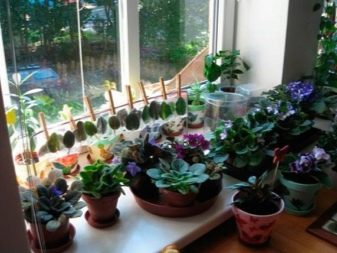
Transfer
This culture needs regular transplantation. This measure is mandatory to provide flowering plants with new portions of nutrients that it will receive when replacing the soil. The essence of the process is reduced to a complete or partial replacement of soil in a pot at intervals of two to three months. The violet can be transplanted by the transshipment method, but on condition that the entire root system is healthy, with a light color and the absence of an unpleasant putrefactive odor. In this case, you should not once again disturb the susceptible root system. However, the moss drainage must be replaced on a case-by-case basis.
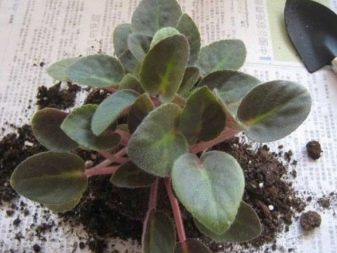
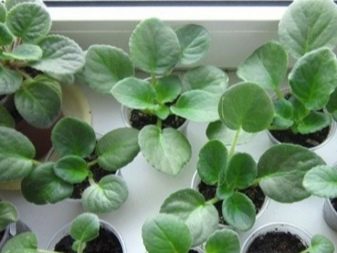
If unhealthy roots are present, they are removed along with the soil, rooting the culture in a new larger pot. If the plant does not have the opportunity to replace the container, and the time for the planned transplant has already come, you can simply replace the drainage at the bottom and remove the top layer of soil by sprinkling a nutritious substrate on top.
Care
Caring for Saintpaulia at home does not require any unusual or complex manipulations from the grower. For flowering and growth, the culture will need to provide a standard set of care measures.
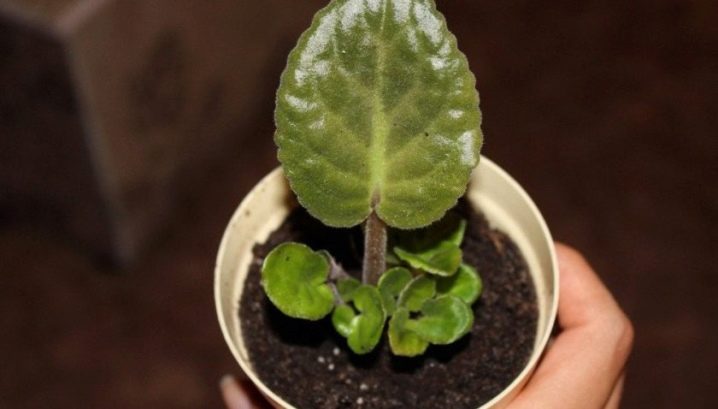
Watering
Too frequent and abundant watering negatively affects the health of the violet, which in most cases becomes the cause of the development of putrefactive processes in the root system. The frequency of humidification will directly depend on the microclimate in which the flower grows. It will be more correct to focus on the characteristics of the moisture content of the upper soil layer in the pot. Watering should be carried out only with settled liquid, avoiding the use of cold water. Moisturizing is carried out in the center, directing the flow of water directly to the root of the violet, trying to exclude the ingress of water on the green mass and flowers.
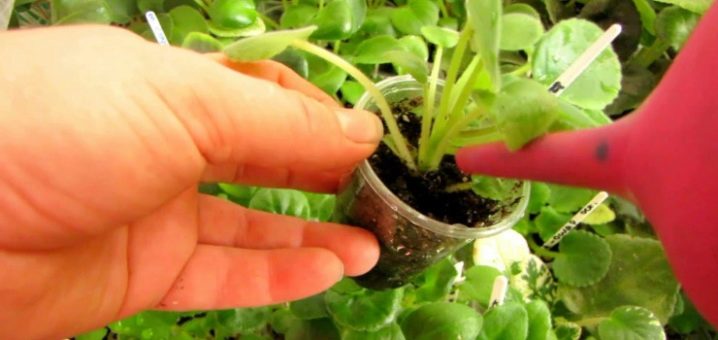
Top dressing
This variety of Saintpaulia will need additional fertilization in the following cases:
- in the flowering phase;
- during the period of active development;
- after transplanting at the time of adaptation to new conditions.

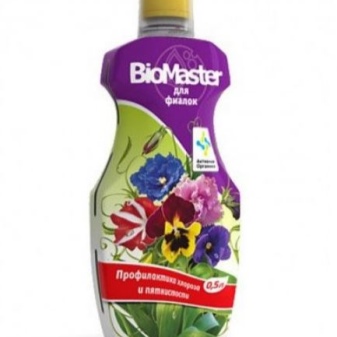
It happens that an urgent need for feeding with complex compounds arises after the plant has been exposed to sunlight for a long time, as well as when the violet is damaged by pests. Such situations require the use of store formulas every two weeks for a duration that will depend on the state of the crop after feeding. Violet variety "Olesya" is best fertilized with complex products, which will include micro- and macroelements. Among the popular highly effective formulations, it is worth highlighting "Stimovit" or "Mister Color".


As for organic matter, an adult and healthy Saintpaulia will need it only during the transplantation process. As a rule, flower growers in this case resort to using diluted rotted manure or humus.Such substances are not recommended to be used as a top dressing for young immature crops with a sensitive root system, as they can injure the roots.
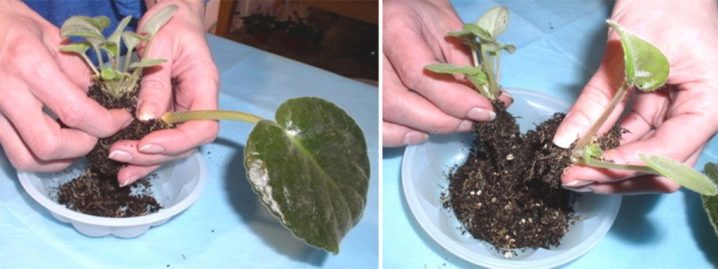
The best option for the introduction of fertilizers is the foliar method, which is usually combined with watering the crop.
In addition to fertilization, timely transplantation and watering, the Olesya variety needs regular pruning. There is no need for the culture to form the crown, since the flower does not stand out with a tendency to grow and is small in size. However, the removal of faded flower stalks and dried parts of the culture is a mandatory care measure.

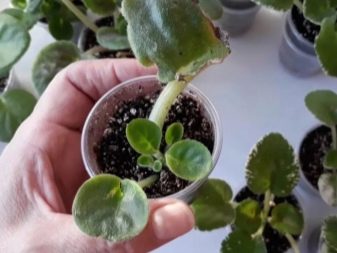
Reproduction
Violets of this variety can be propagated independently by the following methods:
- seeds;
- dividing the bush;
- rooting cuttings.
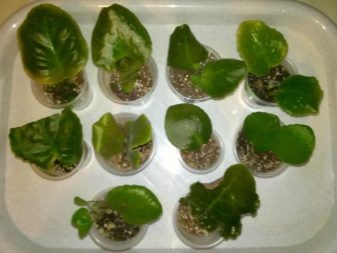
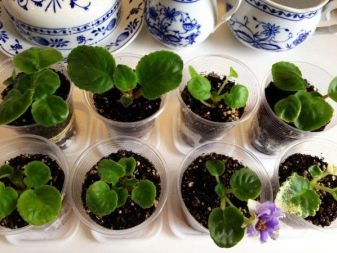
The latter option assumes the use of a leaf from an adult and healthy culture. Root cultivation can be carried out in water or directly in a pot with soil. In this case, it is necessary to separate the leaf plate from the flower at an angle of 45 degrees, the instrument must be disinfected before work. The cut site is processed with crushed coal for quick healing and disinfection. After the roots appear on the leaf, which was grown in water, it is transplanted into the ground. Leaves from the middle row of the plant will be the most suitable material for germination.
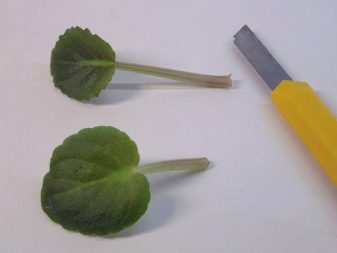
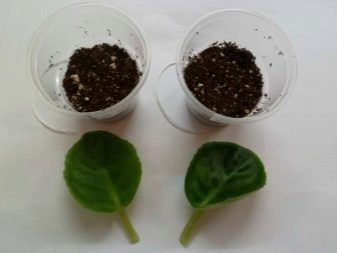
Dividing a bush is a method that requires some training and experience with flowers, since there is a possibility of damage to the root system of the violet during reproduction. The division of the violet is performed after it has been watered, such a culture is removed from the pot, and the formed rosettes are separated from each other. After that, the plants should be planted in separate pots, if it turned out to separate small parts, then they can be temporarily placed in plastic cups.
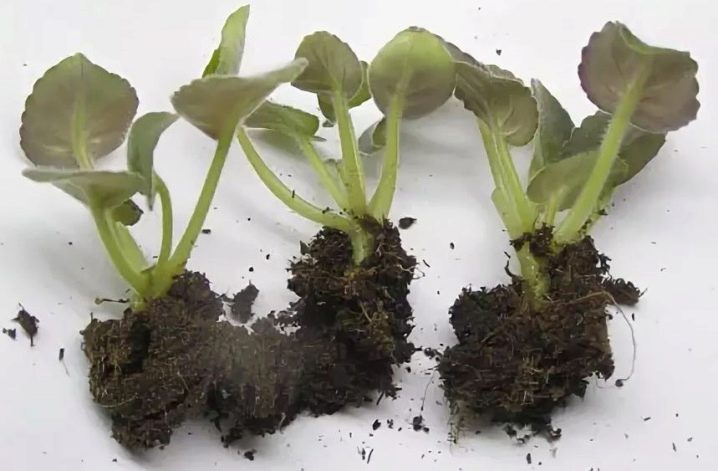
Seeds of this variety of Saintpaulia are quite difficult to find in stores. However, if desired, they can still be purchased. Sowing seeds of a culture is carried out in a substrate for violets, before deepening the planting material into the soil, the soil is moistened with water with a fungicidal composition. Seeds should be immersed in the ground no more than 2 centimeters, observing a similar interval between seeds, if crops will germinate for some time together. For a similar breeding method, you will need to create mini-greenhouses for violets, covering the pots with glass, polyethylene or a jar. Seeds should develop before the appearance of the first shoots in a warm, but in a dark place. The last method of all available will be the longest, but it will preserve all the properties of the mother variety in the new culture.
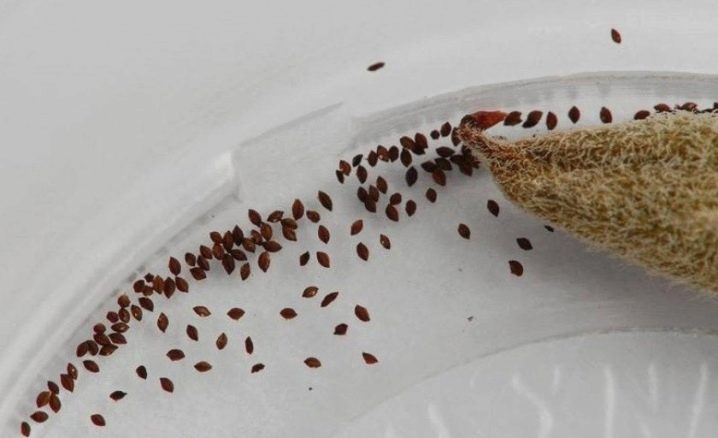
Diseases and pests
In the process of cultivating violets, flower growers may encounter insect pests, as well as some diseases that these plants are susceptible to. Most often, violets suffer from late blight, powdery mildew and various types of rot. For treatment, as a rule, fungicidal compositions are used. As a preventive measure, the same drugs are used in small doses to treat all indoor crops growing at home, including violets.
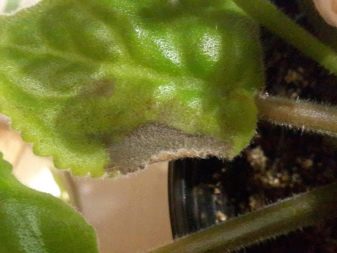
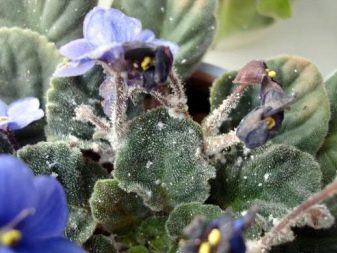
As for pests, in this case, the danger to the plant is represented by ticks, scale insects and thrips. They destroy insects with store products, among them it is worth highlighting "Actellik" and "Fitoverm". And also the use of home remedies is practiced, in this case it is the treatment of green mass with soapy water.
How to care for the "Olesya" violet, see the next video.































The comment was sent successfully.